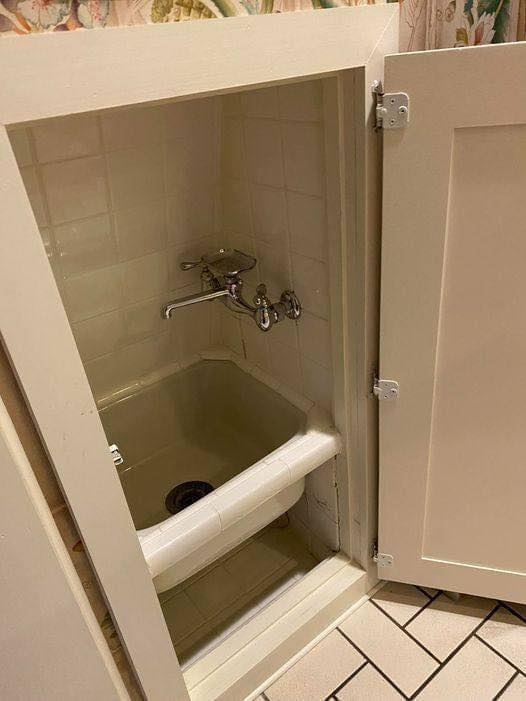Knee-level mopping sinks, once common in older homes, tell a fascinating story about how people lived and worked in the past. Crafted from durable materials like stone or early porcelain, these low sinks were designed to simplify cleaning tasks, such as filling or emptying mop buckets. They offer a glimpse into a time when thoughtful design made daily chores easier while reflecting the social structure of the era.
Positioned low to the ground, these sinks allowed workers to handle heavy buckets without straining their backs, showing a practical focus on comfort. They were often placed in out-of-the-way spots like service corridors, keeping household labor hidden from family living areas. This separation highlights how homes were organized to keep chores discreet, a key part of life in those days.

Beyond their usefulness, these sinks were often beautifully made, with carved details or elegant patterns that showcased skilled craftsmanship. Their sturdy construction has allowed many to survive, turning them into historical gems that reveal the care put into even the simplest household tools. Today, they’re valued as much for their beauty as for their history.
In the past, when manual labor defined household work, these sinks were a small but meaningful innovation. Now, with modern appliances like washing machines, they remind us how much home life has changed. They connect us to an era when every task required effort, and clever designs like these sinks made a real impact on daily routines.
Historians and homeowners alike cherish these sinks for their story. In restored homes or vintage-inspired spaces, they add authenticity, whether used for cleaning or as decorative pieces. By keeping these sinks in use, we honor the ingenuity of past generations, blending their practical and artistic legacy into modern homes with a touch of timeless charm.


